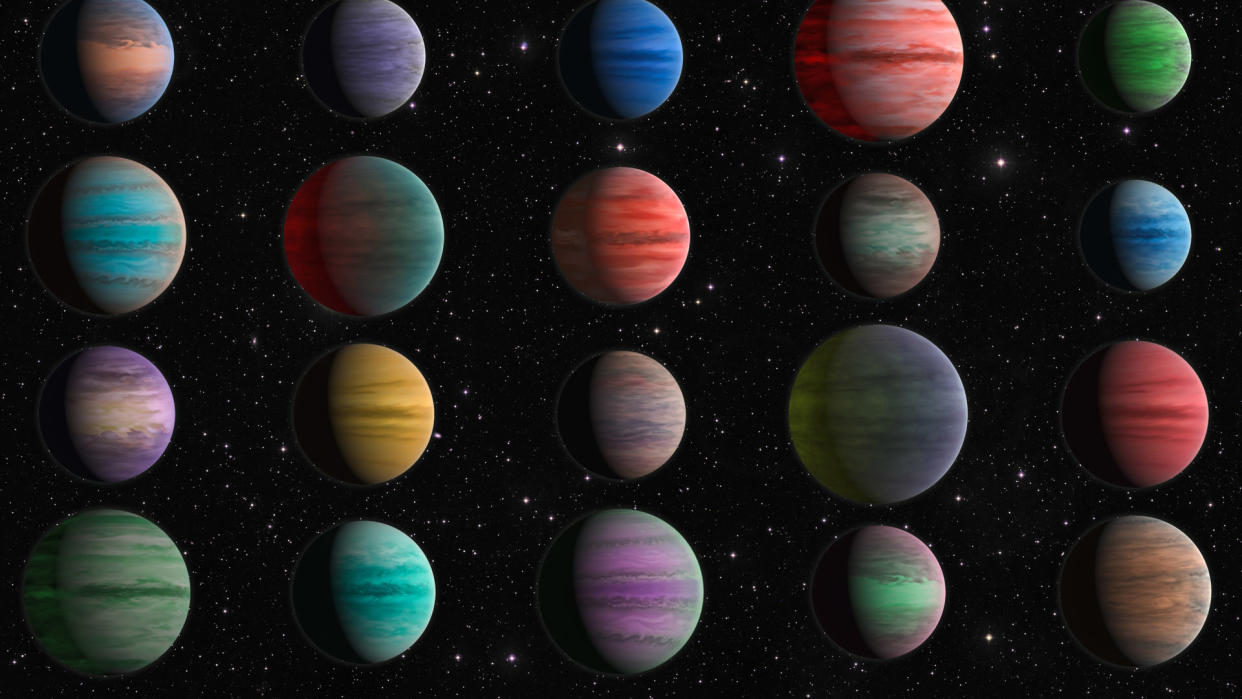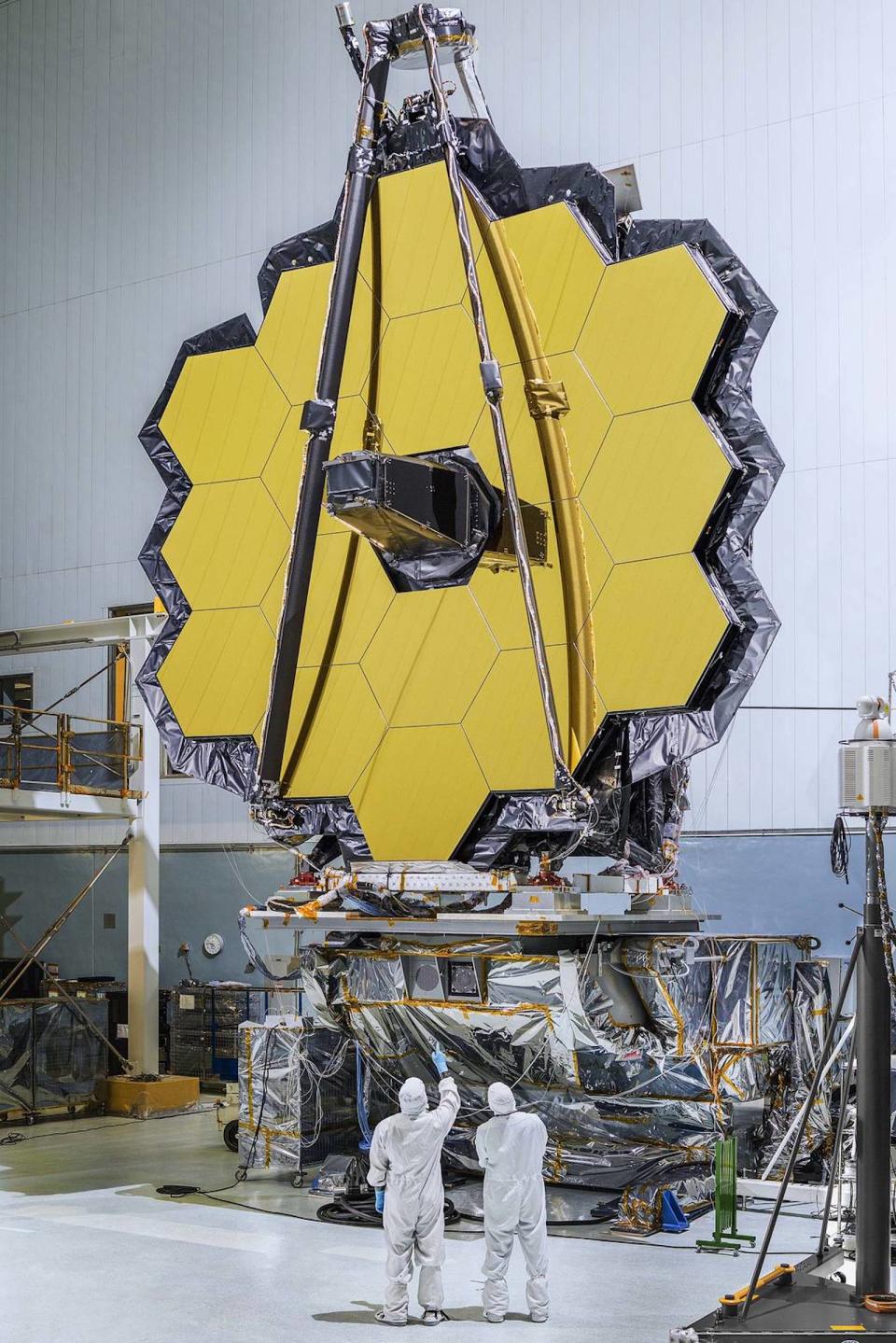Astronomers may be getting Webb Space Telescope exoplanet measurements wrong

Astronomers may be interpreting James Webb Space Telescope's measurements of exoplanet atmospheres wrong, a new study suggests.
The James Webb Space Telescope, the most complex space observatory ever built, captures stunning images of the most distant reaches of the universe. It also takes measurements of the chemical compositions of the intriguing stars, galaxies and nebulas it sees. To interpret this data, scientists rely on complex models. But a new study by researchers from the Massachusetts Institute of Technology (MIT), found that these models are not accurate enough to capture the nuances of Webb's observations.
The relative crudeness of these models, the scientists said in a statement, might mean that the analysis of atmospheres of distant exoplanets "could be off by an order of magnitude."
Related: Marvel at the James Webb Space Telescope's largest image of the cosmos yet
"There is a scientifically significant difference between a compound like water being present at 5% versus 25%, which current models cannot differentiate," Julien de Wit, an assistant professor at MIT's Department of Earth, Atmospheric, and Planetary Sciences (EAPS) and a co-leader of the study said in the statement.
The models in question analyze the opacity of the material observed by Webb, a measurement of how much light passes through it or gets absorbed, and at which wavelengths this occurs. Since every chemical element absorbs light differently, astronomers can reconstruct the chemical compositions and ratios of these chemicals in great detail using these measurements.
Webb, although built to observe the oldest stars and galaxies in the universe, has already proven its strengths in studying planets orbiting stars in our galaxy, the Milky Way. The telescope detected important molecules such as water and carbon dioxide in some planetary atmospheres, but also took a direct image of a gas giant exoplanet.
Astronomers are excited about Webb's ability to study exoplanets in such detail, because the chemical compositions of the planetary atmospheres they hope to find could offer hints about the possible presence of life on some of these distant worlds. But inaccurate readings of the data would mean the obtained insights would be quite unreliable.
"Our translation process will prevent us from catching important subtleties, such as those making the difference between a planet being habitable or not," de Wit said.
The researchers came to the conclusion by testing several versions of the existing opacity models and feeding them synthetic light spectra simulating those obtained by the James Webb Space Telescope. They found that various versions of the model produced differing values that demonstrated their accuracy limits, they said.

The models, the researchers said in the statement, "won’t be sensitive enough to tell whether a planet has an atmospheric temperature of 300 Kelvin [80 degrees Fahrenheit/26 degrees Celsius] or 600 Kelvin [620 degrees Fahrenheit/326 degrees Celsius], or whether a certain gas takes up 5% or 25% of an atmospheric layer."
"That difference matters in order for us to constrain planetary formation mechanisms and reliably identify biosignatures," Prajwal Niraula, a graduate student at EAPS and co-author of the new paper, said in the statement. "Currently, the model we use to decrypt spectral information is not up to par with the precision and quality of data we have from the James Webb telescope. We need to up our game and tackle the opacity problem."
Related stories:
— James Webb Space Telescope glimpses Earendel, the most distant star known in the universe
— James Webb Space Telescope spots baby stars cocooned in the Orion Nebula
— Iconic James Webb Space Telescope images turned into music
The researchers also proposed possible improvements such as taking more laboratory measurements to validate the light-absorbing behavior of various chemical compounds and improving theoretical calculations.
"There is so much that could be done if we knew perfectly how light and matter interact," Niraula said. "We know that well enough around the Earth's conditions, but as soon as we move to different types of atmospheres, things change, and that's a lot of data, with increasing quality, that we risk misinterpreting."
The study was published in the journal Nature Astronomy on Thursday, Sept. 15.
Follow Tereza Pultarova on Twitter @TerezaPultarova. Follow us on Twitter @Spacedotcom and on Facebook.
